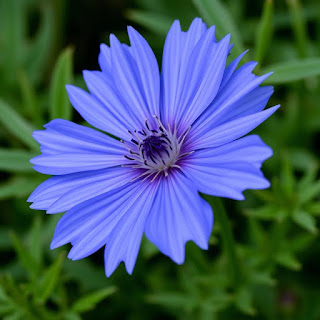Centaurea cyanus: The Lovely Cornflower
Centaurea cyanus: The Lovely Cornflower
Introduction:
In common parlance, the wildflower of a bright blue color is called Centaurea cyanus or the cornflower or bachelor's button and is native to Europe. This bright-colored flower has captured the hearts of garden and meadow everywhere around the globe. Being able to thrive independently as a weed in cornfields, this flower appreciates not just its striking looks but the hope, remembrance, and fertility it symbolizes.
Appearance
Perhaps the most striking feature of this plant is the showy, deep blue flower, but these relatively low-growing species also occur in pink and white to purple shades. They boast star-shaped spiky petals, giving them an aggressively wild appearance. These flowers decorate long, skinny stems up to 80 cm (about 31 inches) tall with tiny, green leaves on top. The pretty blue hue of the petals is so striking that, in the color palette, it is even described as "cornflower blue".
Habitat and Growth
Traditionally, cornflowers were abundant in European grain fields, but the use of herbicides has made them a rarer sight in the wild. However, they are still cultivated in gardens, meadows, and wildflower mixes around the world. Cornflowers thrive in sunny spots with well-drained soil, making them easy to grow and a favorite for pollinators like bees and butterflies. They are annual plants, meaning they complete their life cycle in one growing season, though they often reseed themselves for future blooms.Cultural Importance
Apart from its aesthetic value, Centaurea cyanus bears a rich symbolic meaning. To Germans, this had symbolized the Prussian monarchy since the flower had been part of what Queen Louise of Prussia wore in her flight from Napoleon.
Today it is a symbol of remembrance, but often linked with France and Belgium for its use on Armistice Day to commemorate the dead of World War I. The language of flowers imbues meanings to this small-growing but choice flower of delicate hope and devotion.
Use:
Besides its ornamental use, cornflower has been used in folk medicine due to its anti-inflammatory and antioxidative effects. Traditionally, the flowers of the cornflower plant are used to prepare teas, eye lotions, and tinctures in treating a variety of relatively mild ailments. The petals can be applied in some culinary applications as well, adding color and serving as garnishes for salads or herbal teas.
Conservation
Due to the decline of its natural habitats, Centaurea cyanus is considered an endangered species in some regions of Europe. However, many gardeners and conservationists are working to reintroduce the cornflower to wildflower meadows and other natural spaces to help preserve its presence.Conclusion
The cornflower, with its dazzling blue hue and deep cultural resonance, is more than just a beautiful wildflower. Whether blooming in a garden or symbolizing remembrance, Centaurea cyanus continues to capture hearts and eyes, serving as a reminder of nature’s resilience and beauty.
%20in%20bloom.%20The%20flower%20has%20striking,%20bright%20blue%20petals%20with%20a%20slightly%20spiky,%20star.webp)
%20scattered%20in%20a%20field.%20The%20bright%20blue%20flowers%20with%20spiky,%20star-shaped%20peta.webp)












.jpeg)
Comments
Post a Comment